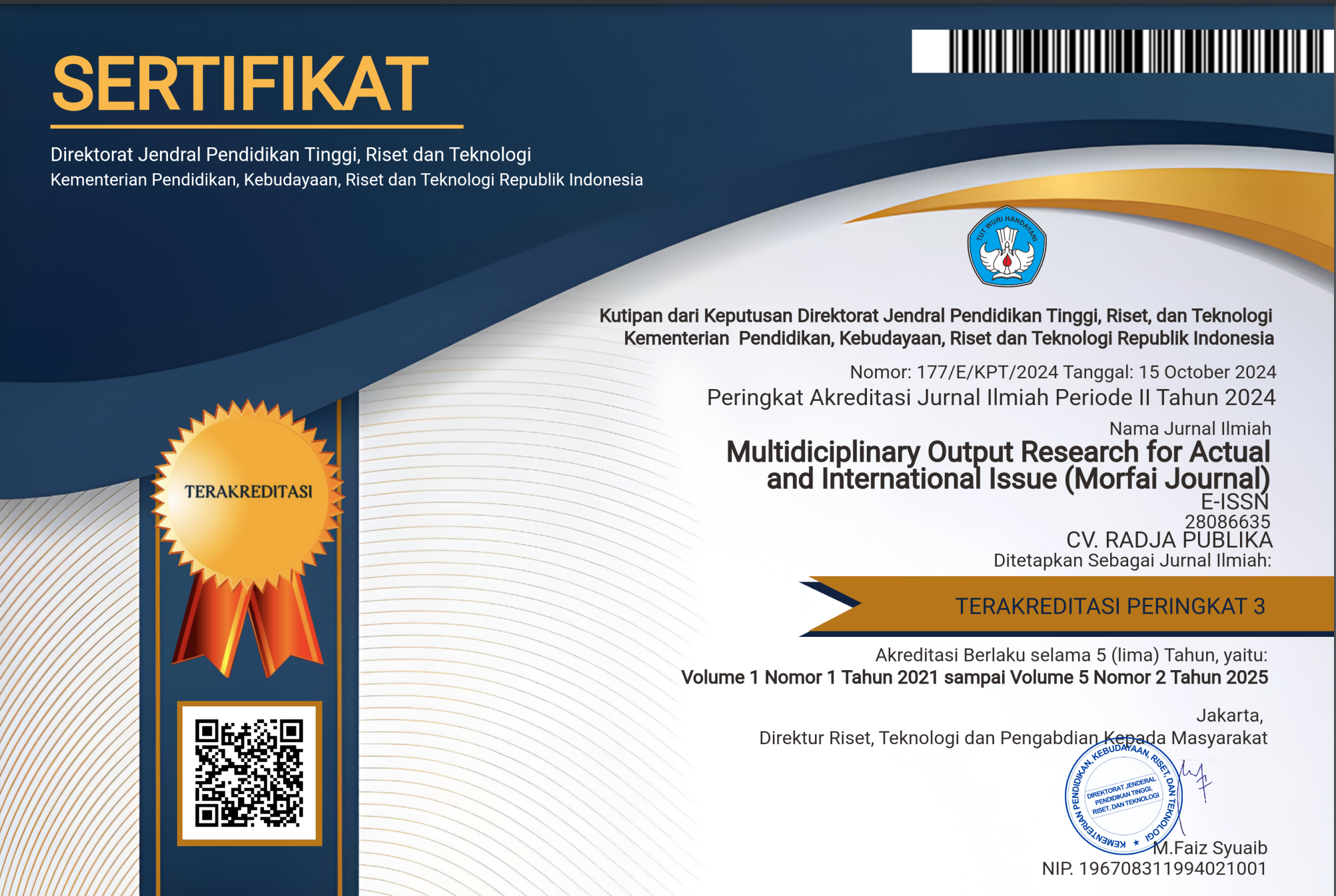COST INFORMATION AND ENERGY EFFICIENCY: EXPERIMENTAL STUDY ON IN THE DESIGN OF NEW SUSTAINABLE PRODUCTS
Main Article Content
Fadilla Damara Putri
Dyah Ekaari Sekar Jatiningsih
This study explores the influence of cost information and energy efficiency in sustainable new product development. With a 2x2 factorial experimental design, the study involved Accounting students of Universitas Muhammadiyah Yogyakarta. Data were collected through experimental tasks based on the type of cost information and the level of energy efficiency. The ANOVA results showed that energy efficiency had a significant effect on green product design, while cost information had no direct effect. These findings emphasize the importance of energy efficiency in product development for sustainability. Green products can reduce production costs, minimize waste, and increase competitiveness. The application of green technology also attracts investment, creates jobs, and supports industrial innovation. In addition, compliance with environmental regulations strengthens sustainable economic growth and improves people's quality of life. Thus, this study contributes to encouraging business practices that support sustainability and industrial innovation.
Ahmad, S., Wong, K. Y., Tseng, M. L., & Wong, W. P. (2018). Sustainable product design and development: A review of tools, applications and research prospects. Resources, Conservation and Recycling, 132(January), 49–61. https://doi.org/10.1016/j.resconrec.2018.01.020
Bisnis, D. A. N. (2021). JURNAL RISET. 27-38.
Blocher, E., Juras, P. E., & Smith, S. D. (2021). Cost management: A strategic emphasis. McGraw-Hill Higher Education.
Bohldar, N. (2007). Strategy and society: The link between competitive advantage and corporate social responsibility [12]. Harvard Business Review, 85(6), 136.
Booker, D. M., Drake, A. R., & Heitger, D. L. (2007). New Product Development : How Cost Objective Setting. Behavioral Research in Accounting, 19, 19–41.
Chesbrough, H. W. (2003). Open innovation: The new imperative for creating and profiting from technology. Harvard Business School.
Citrin, A. V., Lee, R. P., & McCullough, J. (2007). Information use and new product outcomes: The contingent role of strategy type. Journal of Product Innovation Management, 24(3), 259–273. https://doi.org/10.1111/j.1540-5885.2007.00249.x
Claudy, M. C., Peterson, M., & Pagell, M. (2016). The Roles of Sustainability Orientation and Market Knowledge Competence in New Product Development Success. Journal of Product Innovation Management, 33(00), 72–85. https://doi.org/10.1111/jpim.12343
de Sousa Jabbour, A. B. L., Jabbour, C. J. C., Foropon, C., & Filho, M. G. (2018). When titans meet – Can industry 4.0 revolutionise the environmentally-sustainable manufacturing wave? The role of critical success factors. Technological Forecasting and Social Change, 132(October 2017), 18–25. https://doi.org/10.1016/j.techfore.2018.01.017
Delaney, E., & Liu, W. (2023). Managing Design for Environmental Sustainability throughout the Design Process. Design Management Journal, 18(1), 48–62. https://doi.org/10.1111/dmj.12087
Elliott, W. B., Hodge, F. D., Kennedy, J. J., Pronk, M., Elliott, W. B., Hodge, F. D., & Kennedy, J. J. (2019). Are M . B . A . Students a Good Proxy for Nonprofessional Investors ? 82(1), 139–168.
Guo, L. (2021). Implementation of eco-design in product development. May.
Gustaf, O. (2005). Materials & Design and engineering. 26, 313–319. https://doi.org/10.1016/j.matdes.2004.06.016
Hapuwatte, B. M., & Jawahir, I. S. (2019). A total life cycle approach for developing predictive design methodologies to optimize product performance. Procedia Manufacturing, 33, 11–18. https://doi.org/10.1016/j.promfg.2019.04.003
Hardani, Helmina Andriani, Jumari Ustiawaty, Evi Fatmi Utami, Ria Rahmatul Istiqomah, Roushandy Asri Fardani, Dhika Juliana Sukmana, N. H. A. (2020). Buku Metode Penelitian Kualitatif. In Revista Brasileira de Linguística Aplicada (Vol. 5, Issue 1).
Hasan, S. (2024). The Influence Of Product Price And Quality On Purchasing Decisions Pengaruh Harga Dan Kualitas Produk Terhadap Keputusan Pembelian. Management Studies and Entrepreneurship Journal, 5(2), 3826–3833. http://journal.yrpipku.com/index.php/msej
Herrmann, C., & Thiede, S. (2009). CIRP Journal of Manufacturing Science and Technology Process chain simulation to foster energy efficiency in manufacturing. 1, 221–229. https://doi.org/10.1016/j.cirpj.2009.06.005
Horngren, C. T. (2009). Cost accounting: a managerial emphasis. Pearson Education India.
Hossain, M. F. (2018). Green science: Decoding dark photon structure to produce clean energy. Energy Reports, 4, 41–48. https://doi.org/10.1016/j.egyr.2018.01.001
Jaelani, J., & Purnama, K. D. (2022). Manajemen Biaya Dan Kinerja Strategis Dalam Supply Chain. Jurnal Mahasiswa: Jurnal Ilmiah Penalaran Dan Penelitian Mahasiswa, 4(2), 192–219. https://ejurnal.provisi.ac.id/index.php/jurnalmahasiswa/article/view/664
Kamra, J., Mani, A. P., Sharma, M., & Joshi, S. (2024). The Nexus between Green Supply Chain Management and Sustainability Performance in the Past Decade. Sustainability, 16(17), 7474. https://doi.org/10.3390/su16177474
Kerga, E. T., Taisch, M., Terzi, S., & May, G. (2023). Integration of Sustainability in New Product Development Process: Italian Experiences. 1–11. https://re.public.polimi.it/handle/11311/631820
Kholmi, M. (2019). Akuntansi manajemen, Cetakan kedua. Malang: Universitas Muhammadiyah Malang.
Lichtenthaler, U. (2011). Open innovation: Past research, current debates, and future directions. Academy of Management Perspectives, 25(1), 75–93.
Magnacca, F., & Giannetti, R. (2024). Akuntansi manajemen dan pengembangan produk baru: tinjauan literatur sistematis dan arah penelitian masa depan.
Manajemen, S., Nahdlatul, U., & Sidoarjo, U. (2023). Strategi pengembangan produk baru sebagai upaya dalam meningkatkan daya saing perusahaan. 3(2), 22–34.
Otley, D. T. (1980). The contingency theory of management accounting: Achievement and prognosis. Accounting, Organizations and Society, 5(4), 413–428. https://doi.org/10.1016/0361-3682(80)90040-9
Rahatulain, A., Qureshi, T. N., Maffei, A., & Onori, M. (2021). Relationship and dependencies between factors affecting new product development process: An industrial case study. Procedia CIRP, 100, 367–372. https://doi.org/10.1016/j.procir.2021.05.086
Ron, A. J. De. (1998). p r d o u c t i o n e c onom ics Produksi yang berkelanjutan : Hasil akhir dari peningkatan yang berkelanjutan.
Singhal, T. S., Jain, J. K., Ramacharyulu, D. A., Jain, A., Abdul-Zahra, D. S., Manjunatha, & Srivastava, A. P. (2024). Eco-Design of Products and Processes: A Review on Principles and Tools for Sustainable Manufacturing. E3S Web of Conferences, 505. https://doi.org/10.1051/e3sconf/202450501033
Stoneham, M. (2009). Materials and the Environment: Eco-informed material choice. Materials Today, 12(9), 47. https://doi.org/10.1016/s1369-7021(09)70255-x
Waage, S. A. (2007). Re-considering product design: a practical “road-map” for integration of sustainability issues. Journal of Cleaner Production, 15(7), 638–649. https://doi.org/10.1016/j.jclepro.2005.11.026
ZAFIRAH, S. L. (2024). PENGARUH TIPE INFORMASI BIAYA DAN PELATIHANLINGKUNGAN TERHADAP ECO-FRIENDLY DESIGNDALAM PENGEMBANGAN PRODUK BARU (STUDI EKSPERIMEN). Universitas Muhammadiyah Yogyakarta.
Zainuddin, Z. B., Zailani, S., Govindan, K., Iranmanesh, M., & Amran, A. (2017). Determinants and outcome of a Clean Development Mechanism in Malaysia. Journal of Cleaner Production, 142, 1979–1986. https://doi.org/10.1016/j.jclepro.2016.11.086









